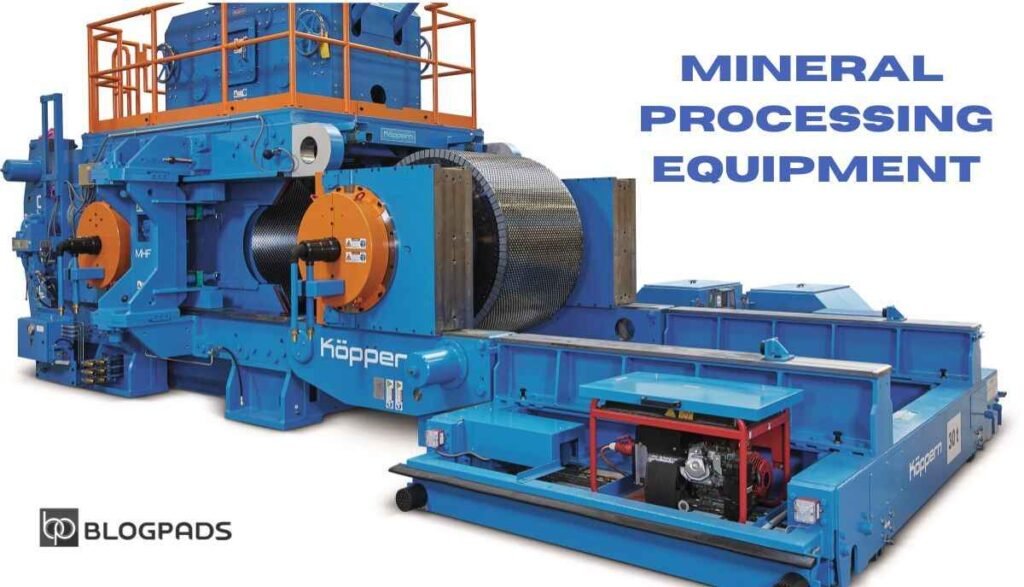Introduction to Mineral Processing Equipment
Mineral processing equipment might sound like a term reserved for engineers or scientists, but it’s more relevant to our daily lives than you’d think. From the phone in your hand to the steel beams supporting your home, processed minerals play a crucial role. Without this equipment, the raw materials extracted from the Earth wouldn’t become usable products.
Why is Mineral Processing Important?
Have you ever wondered how raw minerals become shiny metal objects or fine powders? Mineral processing ensures that these resources are usable, maximizing their potential while minimizing waste. This process supports industries worldwide and is essential for economic growth and technological advancement.
Types of Mineral Processing Equipment
Mineral processing equipment comes in various shapes and sizes, each designed for specific tasks. Here’s a quick look:
- Crushing Equipment: Breaks large rocks into smaller pieces.
- Screening Equipment: Separates particles by size.
- Grinding Equipment: Reduces materials into fine powders.
- Separation Equipment: Extracts pure minerals from ore.
- Dewatering Equipment: Removes moisture from materials.
Crushing Equipment: Breaking it Down
Think of crushing equipment as the first step in cooking—a bit like chopping vegetables before making soup. These machines take large, unmanageable rocks and break them into smaller pieces, ready for further processing. Examples include jaw crushers, cone crushers, and impact crushers.
Screening Equipment: Sorting Made Simple
Screening equipment acts like a sieve for minerals. Once materials are crushed, they’re sorted by size using screens or vibrating machines. It’s a crucial step, ensuring only the right-sized particles move forward in the process.
Grinding Equipment: Refining the Materials
Grinding equipment takes the sorted materials and refines them into powders or smaller granules. Think of it as grinding coffee beans to get that perfect brew. Ball mills, rod mills, and autogenous mills are commonly used machines for this purpose.
Separation Equipment: Picking the Pure
After grinding, materials need to be separated based on their properties, like density or magnetism. Separation equipment uses methods like flotation, magnetic separation, or gravity separation to ensure that only pure minerals are extracted. It’s like picking out the best fruits from a mixed basket.
Dewatering Equipment: Squeezing Out Water
Water often plays a role in mineral processing, but the final product needs to be dry. Dewatering equipment like filters or centrifuges removes excess water, making the minerals ready for use or further refining.
Automation in Mineral Processing
With technology advancing rapidly, automation is transforming mineral processing. Machines equipped with sensors and AI ensure precise operations, reduce waste and improve efficiency. This revolution is making mineral processing smarter and more sustainable.
Benefits of Mineral Processing Equipment
- Efficiency: Converts raw materials into valuable resources.
- Economic Growth: Drives industries like construction and manufacturing.
- Environmental Protection: Minimizes waste and maximizes resource utilization.
Challenges in Mineral Processing
Despite its benefits, mineral processing faces challenges like:
- High energy consumption.
- Wear and tear of equipment.
- Environmental concerns due to by-products.
Addressing these issues requires innovation and sustainable practices.
Environmental Impact and Sustainability
Modern mineral processing focuses on reducing its ecological footprint. Recycling water, using energy-efficient equipment, and implementing waste management systems are just a few steps toward a greener future.
Advances in Technology: What’s Next?
The future of mineral processing looks bright with emerging technologies like:
- Smart Equipment: Machines that adapt in real-time.
- Nanotechnology: Enhancing efficiency and recovery.
- Renewable Energy: Powering equipment sustainably.
Choosing the Right Equipment for Your Needs
Selecting the right mineral processing equipment depends on factors like the type of mineral, processing capacity, and environmental considerations. Consulting with experts and staying updated on technology trends can guide you in making the best choice.
Conclusion and Future Outlook
Mineral processing equipment is the unsung hero of modern industries. It not only transforms raw resources into valuable products but also supports sustainable development. As technology evolves, these machines will become even more efficient, paving the way for a greener, smarter future.
FAQs
1. What is mineral processing equipment used for?
Mineral processing equipment is used to transform raw minerals into usable products by crushing, grinding, separating, and dewatering them.
2. Why is mineral processing important?
It maximizes the value of raw materials, supports industrial growth, and ensures the efficient use of resources with minimal waste.
3. What are the main types of mineral processing equipment?
The main types include crushing equipment, screening equipment, grinding equipment, separation equipment, and dewatering equipment.
4. How does automation benefit mineral processing?
Automation enhances precision, reduces energy consumption, and increases overall efficiency, making operations faster and more sustainable.
5. How can we reduce the environmental impact of mineral processing?
Using energy-efficient machines, recycling water, and implementing sustainable waste management practices help reduce the ecological footprint of mineral processing.

